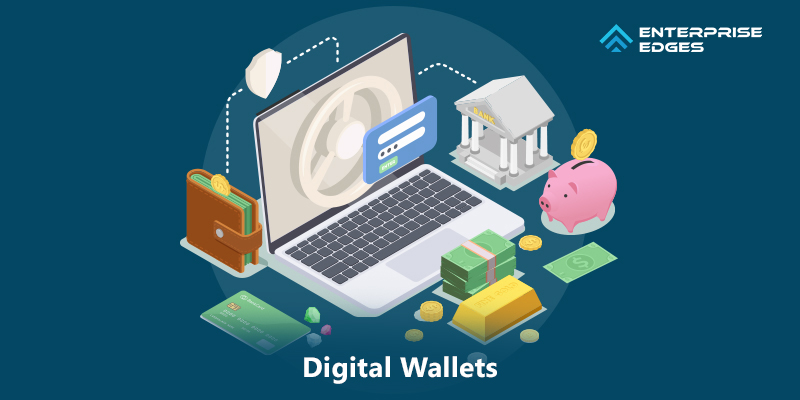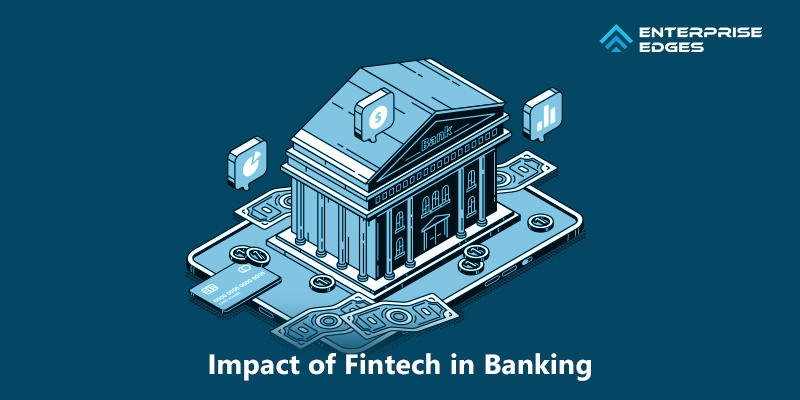After globalization, there has been a financial revolution in the banking space with a tremendous impact on its products and services. The consequent creation of a more extensive market, the bridging of geographical gaps, and the accessibility to a larger customer base made way for acute competition in the market.
To combat this cut-throat competition, banks started to employ sophisticated technology for all their offerings. This technological boom to satiate the growing market led to the fintech revolution in the banking sector.
What is Fintech?

Fintech is the combination of terms ‘finance’ and ‘technology’. It refers to the application of technology to provide a divergent array of financial services. The fintech industry encompasses traditional financial institutions, regulators, fintech startups, and venture capitalists.
Uses of Fintech
Financial technology provides several services to consumers from businesses. These are a few of their key offerings:
1. Digital Wallets

Apps like PayTM and Mobikwik facilitates the transaction of money. It can be done over the web and on mobiles, without the requirement of a merchant account.
2. Crowdfunding Platforms
It lets internet users send and receive money from others on the same platform. It also allows consumers to pool funds from diverse sources. Companies like Patreon and GoFundMe provides such assistance.
3. Cryptocurrency and Blockchain

Cryptocurrency exchanges such as ‘Binance’ and Coinbase assists users to trade cryptocurrencies like ‘Bitcoin’ and ‘Litecoin’. On the other hand, Blockchain-as-a-Service companies help reduce fraud by keeping provenance data on the blockchain.
4. Insurtech
It employs technology to simplify and streamline the insurance industry and enhances the backend process. Thus, improving customer service and saves the company money. ‘Acko’ and ‘PolicyBazaar’ provide such Insurtech services.
5. Robo-Advising and Stock-Trading Apps
Robo-Advisers like Betterment automates investment advice using algorithms to increase accessibility and lower its cost. Investors can now buy and sell stocks with the help of Stock-Trading Apps like Acorns and Robinhood.
6. The Fintech Landscape in India
According to Achyuta Ghosh, Head of Research at NASSCOM, “ India has the highest fintech adoption rate and second-largest fintech startup based in the world. 1000+ fintech startups in India spread across diverse areas such as digital lending, digital payments and wealth management are offering impressive emerging tech-based solutions.”.
PayTM, PolicyBazaar and Instamojo are a few of the leading Indian fintech startups.
The key catalysts behind the rise of the Indian Fintech Revolution:
Fintech has now become an indispensable part of our life. And these are some of the impelling factors that contributed to the growth of the fintech startups in India:
-
The Demands For Digital Finance

According to a 2016 McKinsey report, two billion individuals and 200 million micro, small, and midsize businesses in emerging economies today lack access to savings and credit. Accessibility issues like these compelled the banks to incorporate technology to better their service.
-
The Mushrooming Of Smartphones
India has now eclipsed the US, becoming the second-largest smartphone market on the earth. The apparent transition of Indian mobile networks to bonafide software services has empowered fintech startups.
-
Need For Easy Payments
The general public desire to make quick and tireless payments has acted as an impetus to embrace financial technologies. Now, monetary transactions are simple than ever. Fintech services have been enabled in eliminating the agonizingly lengthy queues and save time.
-
Support From The Regulatory Bodies
With initiatives like StartUp India and the introduction of Unified Payment Interface (UPI), government and regulatory bodies like RBI and SEBI are aggressively promoting the objective of a cashless society.
-
The Arrival of API-Based Services

UID, UPI, eKYC, Mobile-based Digital Signature, Digital Locker (stamps out the need to submit a paper document after the first time) and Digital Consent (permits people to swiftly, transparently, and securely make their profile and transaction data available to third parties for services) are the six elemental technologies that India has put forth. These digital services aides fintech firms to streamline and digitize everything.
-
The interest of Venture Capitalists
The benefits of fintech in banking have become more evident to venture capitalists. Investors are thus providing capital for different segments including wealth management, money lending, and credit reporting.
-
The Rigid Structure of Traditional Banks
With intense regulations to high operating costs, much of the traditional business practices appear unappealing to the customer base. Traditional banks also fail to focus on individual profit-making services and products.
Impact of Fintech in Banking

The fintech revolution in the banking industry in India continues to leave its mark in the wake. A few of them are:
1. Financial Inclusion
- Fintech plays a crucial role in obliterating barriers like financial unawareness, policy gaps, and scalding costs of conventional banking services. It provides the poor and unbanked, remunerative shots at life. In addition to financial inclusion, the government also aims to sniff out corruption and fraud.
- Financial Assistance to the MSMEs
The shift proves to be lucrative for people from SMEs and MSMEs to self-employed individuals and rural entrepreneurs. MSMEs are responsible for approximately 24.63% of the GDP of India. Despite playing such a critical part in the country’s economy, MSMEs continues to face innumerable obstacles like the lack of capital. That is where fintech startups come in and make it easier for MSMEs to obtain loans.
2. Enhanced Customer Experience
Fintech is much more customer-centric in comparison to traditional banks. Fintech services have time and again demonstrated the versatility with which they carry out proceedings.
These are some of the ways by which the consumer benefits:
- Economizes time and cost.
- One point of access.
- Personalized services.
- Improved security.
- Lesser red tapes.
- Usage of NLP based chatbots.
- Other cloud banking facilities.
Conclusion
The awareness of the fintech industry has also risen with the increase in the number of fintech startups in India. This recognition is promising for fintech firms. Therefore, even with numerous bottlenecks in its way, we can say with finality that fintech banking will continue making transformational waves in the banking industry.
